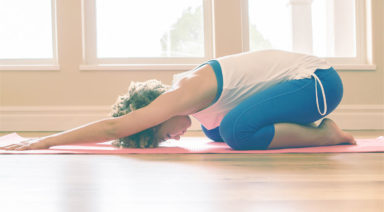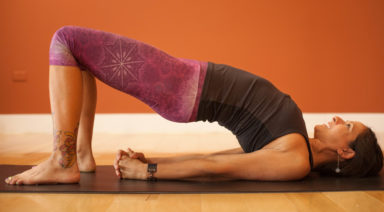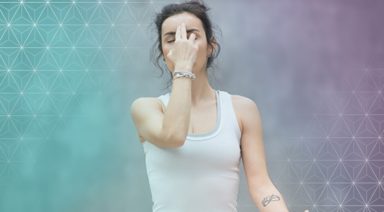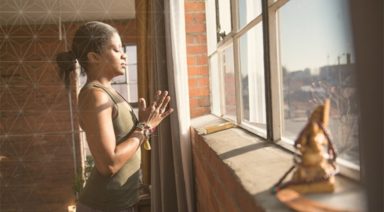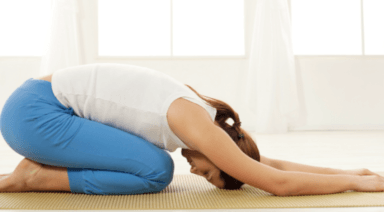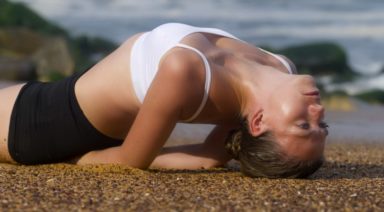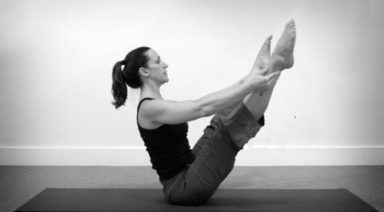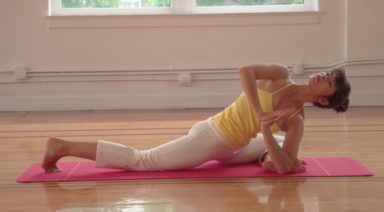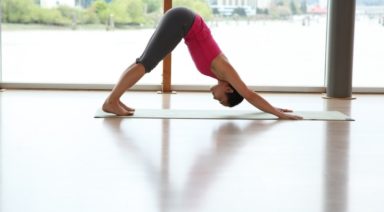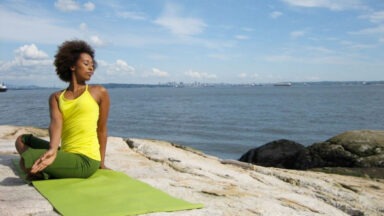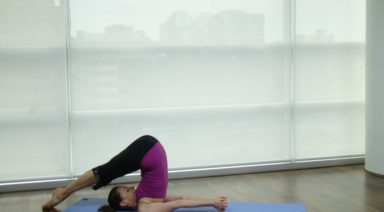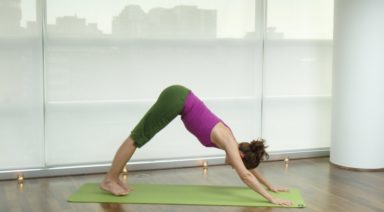Eka Hasta Bhujasana: Elephant’s Trunk Pose

Eka hasta bhujasana (Eh-kah Ha-stah Boo-JAS-ah-nah) is a unique arm balance that stabilizes the pelvic girdle while opening your hips, improving balance and coordination.
SANSKRIT:
- Eka: one
- Hasta: hand
- Bhjua: shoulder
- Asana: pose
PHILOSOPHY AND ORIGIN:
In general, yoga asanas help us bring together distracted or wayward energies, forging them together into an integrated, coherent state. Arm balance poses like elephant’s trunk pose help to connect our lower and upper extremities, awakening a direct and naturally centered energy in the pelvis and navel area. This energy can then be drawn into the higher centers of our bodies, such as the heart, throat, and mind.
PHYSICAL BENEFITS:
- Strengthens your arms and shoulders
- Opens your hips
- Stabilizes your pelvic girdle
PREPARATORY POSES:
- Staff pose | Dandasana
- High to mid plank | Chaturanga dandasana
- Boat pose | Navasana
SEQUENTIAL POSES:
- Eight angle pose | Astavakrasana
- Compass pose | Parivrtta surya yantrasana
- Heron pose | Krounchasana
COUNTER POSES:
- Bridge pose | Setu bhandasana
- Supine hero’s pose | Supta virasana
- Bound angle pose | Baddha konasana
ADJUSTMENTS/MODIFICATIONS:
- Try lifting up with the lower leg tucked in rather than extended out in front.
- Place a block under your extended heel to help lift the leg.
STEP-BY-STEP:
- Begin seated with your legs out in front of you (dandasana). Bend your right knee toward your chest and place your foot on the ground.
- Tiptoe your right foot out to your right. Thread your right arm underneath your right knee and place your hand on the ground with the fingers pointing forward. Place your left hand on the ground outside your left hip on an equal plane with your right.
- Walk your right leg up your right arm until the crease of your knee comes to rest on your right triceps. Hug your leg into your arm and your arm into your leg. Keep the right knee bent and the right foot pointed.
- Press into your hands to lift your hips and left leg off the ground. Point both feet.
- Hold for 3-5 breaths, then gently release. Repeat on the other side.
###Legal Disclaimer Before participating in any exercise program or using any fitness products or services that may be described and/or made accessible in or through the Gaia Website and/or the Services, you should consult with a physician or other healthcare provider. Read more about Gaia’s Terms Of Use.
Utthita Trikonasana: Triangle Pose

ADJUSTMENTS | BENEFITS | SEQUENCING | SANSKRIT | STEPS
A classic standing posture in many yoga lineages utthita trikonasana (oo-TEE-tah trik-cone-AHS-uh-nah), strengthens and stretches the entire body. Approaching the pose with knowledge of intelligent modifications will help you enjoy the posture and all it has to offer.
Philosophy + Origin
In hatha yoga, where the intent is to unite opposing forces – sun with moon, masculine with feminine, light with dark – this pose offers an opportunity to embody this philosophy when you focus on finding stability while you expand. When you look at the physical shape of the posture, you also see the triangles being formed. And, when you look a little closer, you find several triangles hidden in the shape of the body – the two legs with the floor, floating under the side body, and between the front foot and the front hand.







